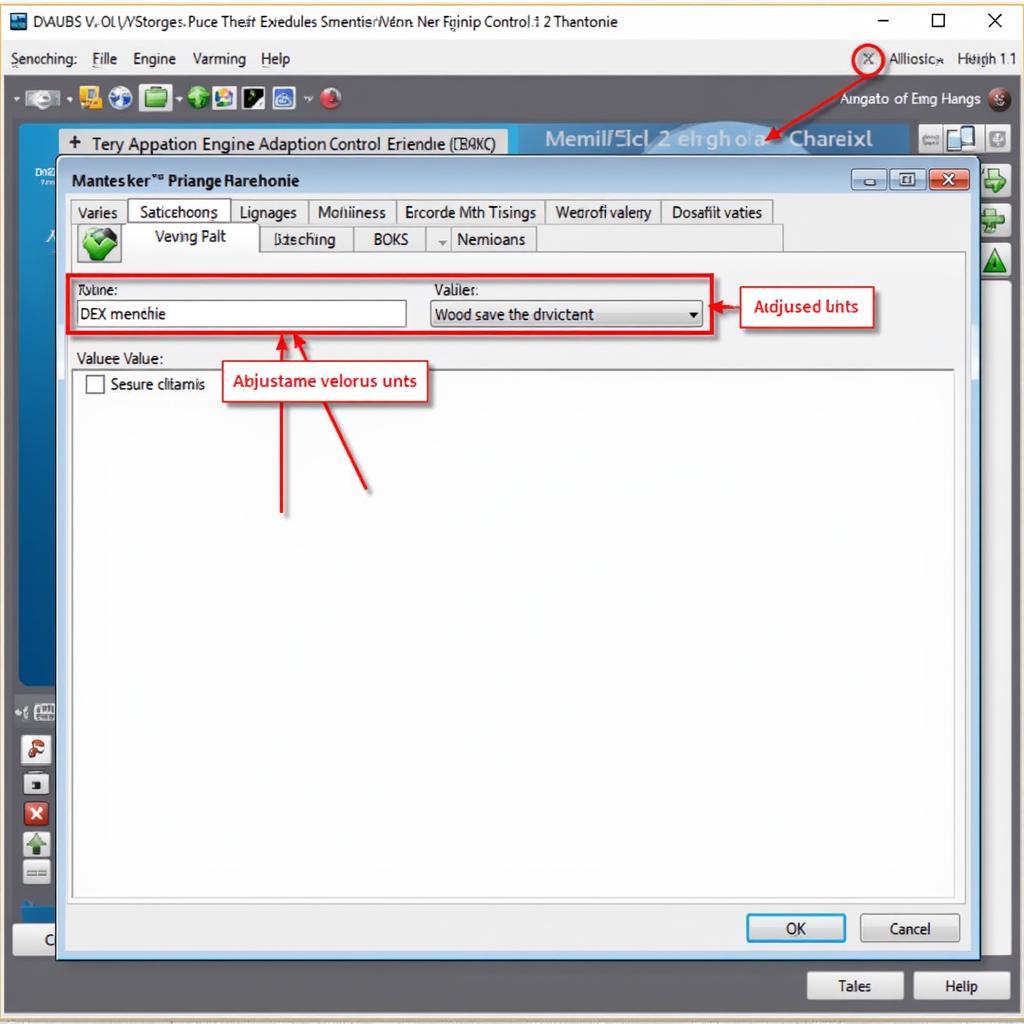Your cart is currently empty!

Mastering Ignition Timing Angle with VCDS
Understanding and adjusting ignition timing angle is crucial for optimal engine performance. Using VCDS, a powerful diagnostic tool, you can accurately measure and fine-tune this vital parameter. This article provides a comprehensive guide on how to utilize VCDS effectively for ignition timing angle adjustments. vcds ignition timing angle
What is Ignition Timing Angle and Why Does It Matter?
Ignition timing angle refers to the precise moment the spark plug ignites the air-fuel mixture in the engine cylinder. This timing is critical for maximizing power output, fuel efficiency, and minimizing emissions. Incorrect timing can lead to a variety of issues, from poor performance and increased fuel consumption to engine damage.
How to Measure Ignition Timing Angle with VCDS
Using VCDS to measure your ignition timing angle is a straightforward process, allowing you to gain valuable insights into your engine’s performance. First, connect your VCDS interface to your vehicle’s OBD-II port. Then, turn the ignition on without starting the engine. Next, select the “Engine” module, followed by “Measuring Blocks.” Locate the specific measuring block for ignition timing, which varies depending on the engine code. The displayed value represents the ignition timing angle.
Interpreting VCDS Ignition Timing Angle Readings
Understanding the readings you obtain from VCDS is just as important as obtaining them. A reading that deviates significantly from the manufacturer’s specifications can indicate a problem. For instance, excessively advanced timing can lead to detonation (knocking), while retarded timing can cause power loss and increased fuel consumption.
Common Causes of Ignition Timing Issues
Several factors can contribute to incorrect ignition timing. These can range from faulty sensors, such as the crankshaft position sensor or camshaft position sensor, to issues with the timing belt or chain, and even problems with the engine control unit (ECU) itself.
Adjusting Ignition Timing Angle with VCDS
In some cases, you can adjust the ignition timing angle using VCDS. However, this procedure requires careful attention and a thorough understanding of your engine’s specifications. Improper adjustments can have detrimental effects on engine performance and longevity. Consult your vehicle’s repair manual or a qualified technician for specific instructions.
When to Seek Professional Help
While VCDS is a powerful tool, certain situations warrant professional intervention. If you’re uncomfortable with making adjustments yourself, or if the issue persists despite your efforts, consulting a qualified technician is always the best course of action.
2001 jetta vr6 vcds measure blocks for timing This resource can provide further insights into specific VW models.
Why is My Ignition Timing Angle Off?
If your ignition timing angle is incorrect, it could be due to various reasons, including worn-out components, a failing sensor, or a malfunctioning ECU.
“Accurate ignition timing is paramount for optimal engine performance,” says automotive expert, Dr. Michael Schmidt. “Using VCDS, technicians can pinpoint and rectify timing issues effectively, preventing further damage and ensuring smooth operation.”
vr6 misfire vcds This link might be helpful if you’re experiencing misfires.
How Do I Correct Ignition Timing Angle Using VCDS?
Correcting ignition timing angle using VCDS requires accessing the specific adaptation channels within the engine control module and making careful adjustments based on the manufacturer’s specifications.
“Always refer to your vehicle’s service manual or consult a qualified technician before attempting any adjustments to the ignition timing,” advises Ms. Sarah Miller, a seasoned automotive engineer. “Improper adjustments can have adverse effects.”
how to measure timing mk5 jetta vcds Here’s another resource for MK5 Jetta owners.
 Adjusting Ignition Timing Angle in VCDS
Adjusting Ignition Timing Angle in VCDS
vcds b5 a4 timing belt check Checking your timing belt is a crucial maintenance step.
Conclusion
Mastering the use of VCDS for ignition timing angle analysis and adjustment can significantly enhance your ability to diagnose and address engine performance issues. Utilizing VCDS for ignition timing angle diagnostics empowers you to take control of your vehicle’s performance. Need assistance? Connect with us at VCDSTool: +1 (641) 206-8880 and our email address: vcdstool@gmail.com, 6719 W 70th Ave, Arvada, CO 80003, USA.
by
Tags:
Leave a Reply